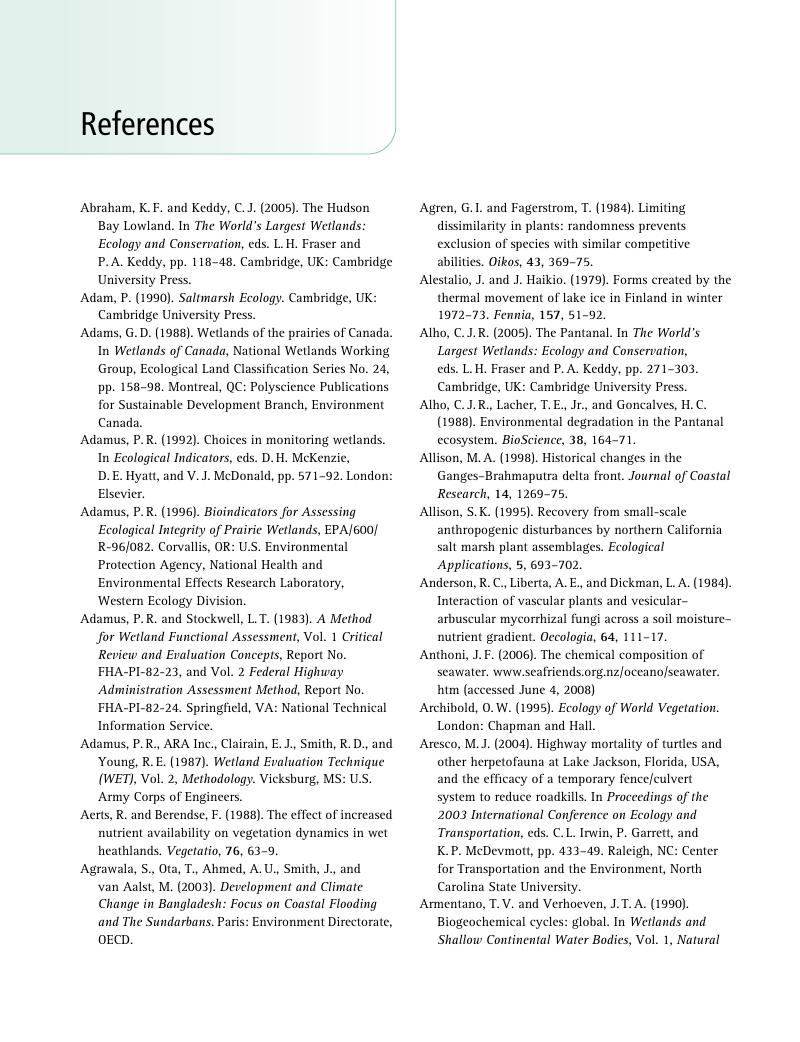Book contents
- Frontmatter
- Contents
- Preface to the second edition
- Preface to the first edition
- Acknowledgments
- 1 Wetlands: an overview
- 2 Flooding
- 3 Fertility
- 4 Disturbance
- 5 Competition
- 6 Herbivory
- 7 Burial
- 8 Other factors
- 9 Diversity
- 10 Zonation: shorelines as a prism
- 11 Services and functions
- 12 Research: paths forward
- 13 Resortation
- 14 Conservation and management
- References
- Index
- Plate section
- References
- Frontmatter
- Contents
- Preface to the second edition
- Preface to the first edition
- Acknowledgments
- 1 Wetlands: an overview
- 2 Flooding
- 3 Fertility
- 4 Disturbance
- 5 Competition
- 6 Herbivory
- 7 Burial
- 8 Other factors
- 9 Diversity
- 10 Zonation: shorelines as a prism
- 11 Services and functions
- 12 Research: paths forward
- 13 Resortation
- 14 Conservation and management
- References
- Index
- Plate section
- References
Summary

- Type
- Chapter
- Information
- Wetland EcologyPrinciples and Conservation, pp. 427 - 475Publisher: Cambridge University PressPrint publication year: 2010



